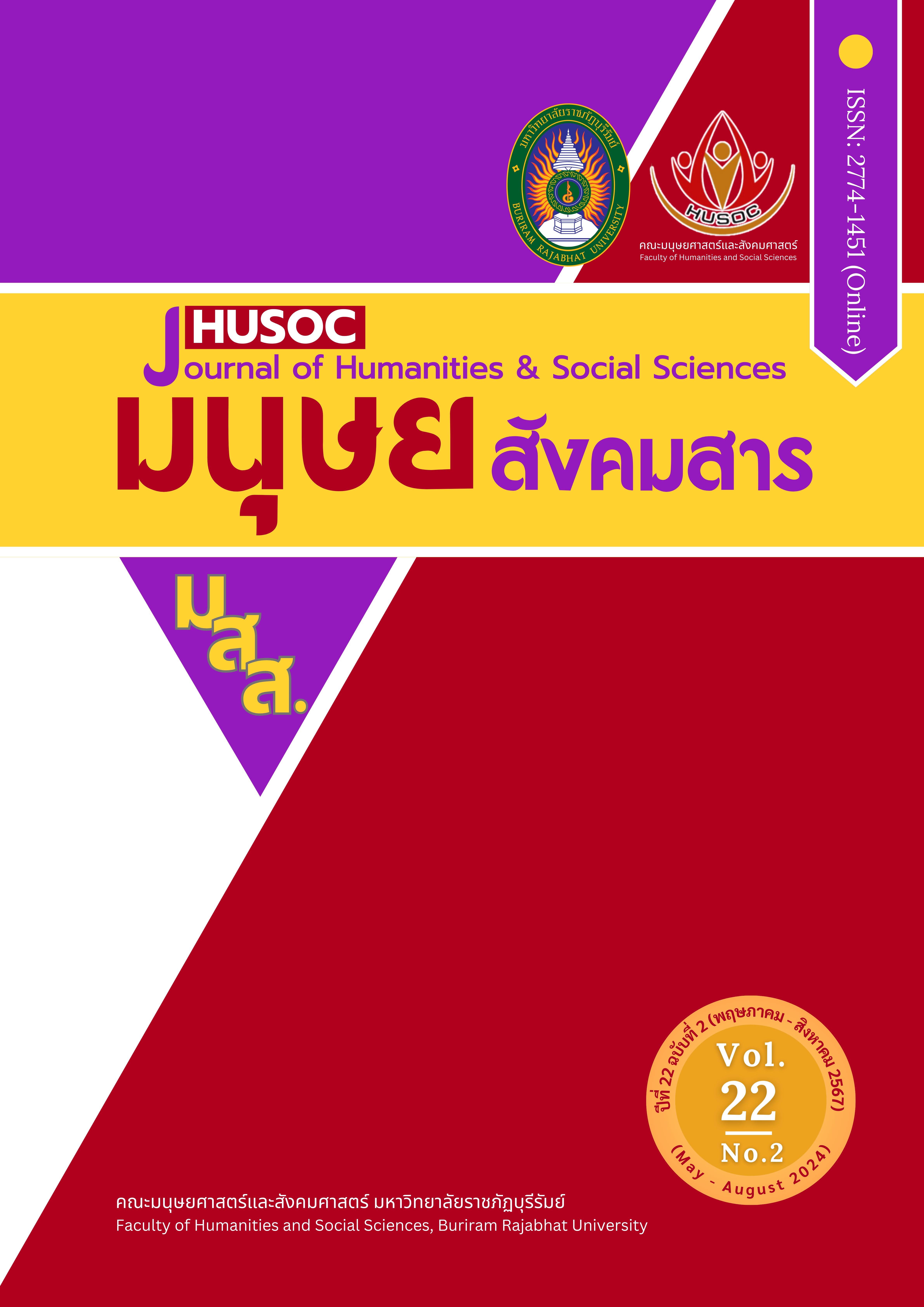ปัจจัยด้านเศรษฐกิจและสังคมของครัวเรือนที่มีผลต่อสัดส่วนภาระหนี้ต่อรายได้ของครัวเรือนไทย
Main Article Content
บทคัดย่อ
การศึกษาในครั้งนี้เพื่อวิเคราะห์ปัจจัยด้านเศรษฐกิจและสังคมที่มีผลต่อสัดส่วนภาระหนี้ต่อรายได้ของครัวเรือนไทย และศึกษาผลกระทบของปัจจัยกำหนดสัดส่วนภาระหนี้ต่อรายได้ของครัวเรือนที่มีสัดส่วนภาระหนี้ต่อรายได้ของครัวเรือนต่ำกว่าและสูงกว่าระดับเฉลี่ยตามลำดับ โดยใช้ข้อมูลจากการสำรวจภาวะเศรษฐกิจและสังคมของครัวเรือน พ.ศ. 2564 ของสำนักงานสถิติแห่งชาติ การวิเคราะห์ข้อมูลใช้สมการถดถอยแบบค่าเฉลี่ยและควอนไทส์รีเกรสชั่น ณ ระดับ 0.25 และ 0.75 ผลการศึกษาพบว่า ระดับการศึกษาสูงสุดของหัวหน้าครัวเรือน สถานภาพการทำงานของหัวหน้าครัวเรือน จำนวนสมาชิกในครัวเรือน รายจ่ายเฉลี่ยต่อเดือนของครัวเรือน และเงินออมเฉลี่ยต่อเดือนของครัวเรือน เป็นปัจจัยที่มีบทบาทสำคัญต่อการกำหนดสัดส่วนภาระหนี้ต่อรายได้ของครัวเรือนในทุกระดับ ดังนั้น การให้ความสำคัญกับการบริหารจัดการเงินเพื่อเป็นการสร้างภูมิคุ้มกันทางการเงินให้กับครัวเรือน รวมถึงการนำสัดส่วนการผ่อนชำระต่อรายได้มาใช้เป็นเกณฑ์ในการก่อหนี้ใหม่ จะช่วยลดการก่อหนี้เกินตัว และช่วยให้ลูกหนี้มีรายได้หลังชำระหนี้เพียงพอต่อการดำรงชีพ
Article Details

อนุญาตภายใต้เงื่อนไข Creative Commons Attribution-NonCommercial 4.0 International License.
เนื้อหาและข้อมูลในบทความที่ลงตีพิมพ์ในวารสารทดสอบระบบ ThaiJo2 ถือเป็นข้อคิดเห็นและความรับผิดชอบของผู้เขียนบทความโดยตรงซึ่งกองบรรณาธิการวารสาร ไม่จำเป็นต้องเห็นด้วย หรือร่วมรับผิดชอบใดๆ
บทความ ข้อมูล เนื้อหา รูปภาพ ฯลฯ ที่ได้รับการตีพิมพ์ในวารสารทดสอบระบบ ThaiJo2 ถือเป็นลิขสิทธิ์ของวารสารทดสอบระบบ ThaiJo2 หากบุคคลหรือหน่วยงานใดต้องการนำทั้งหมดหรือส่วนหนึ่งส่วนใดไปเผยแพร่ต่อหรือเพื่อกระทำการใดๆ จะต้องได้รับอนุญาตเป็นลายลักอักษรจากวารสารทดสอบระบบ ThaiJo2 ก่อนเท่านั้น
เอกสารอ้างอิง
Bahadir, B., & Gicheva, D. (2022). Macroeconomic Implications of Student Debt: A state‐level analysis. Journal of Money, Credit and Banking, 54(8), 2273-2300.
Baker, H. K., Kumar, S., Goyal, N., & Gaur, V. (2019). How financial literacy and demographic variables relate to behavioral biases. Managerial Finance, 45(1), 124–146.
Brewer, M. (2020). Household debt and children’s risk of food insecurity. Social Problems, 67(3), 565-584.
Bungkilo, D., Samran, W., & Homlaor, T. (2023). Determinant of household loan’s formal debt in Chiang Rai province. The Journal of Accounting Review, 8(2), 21-41. [in Thai]
Chaitarin, W., & Kharuhayothin, T. (2019). Debt of farm households in Phayao province. Journal of Community Development and Life Quality, 7(3), 283-294. [in Thai]
Chaiyanon. P., & Sanguanwongse, V. (2021). Debt analysis and related factor to debt agriculture of cooperative member in the northern of Thailand. Lampang Rajabhat University Journal, 10(1), 63-75. [in Thai]
Fang, J., Hao, W., & Reyers, M. (2022). Financial advice, financial literacy, and social interaction: What matters to retirement saving decisions? Applied Economics, 54(50), 5827-5850.
Intarapak, S., & Supapakorn, T. (2020). Application of logistic regression analysis to household debt of Bangkok and metropolitan area of Thailand. WSEAS Transactions on Business and Economics, 17, 676-681. [in Thai]
Intarawiset, N., Nilbai, T., Thongphat, T., & Antarasena, A. (2022). The effect of household socio-economic factors on household debt in Thailand. Journal of Management Sciences, 9(1), 115-138. [in Thai]
Khammek, S., & Intagoon, K. (2024). Factors effecting elderly capacity in saving of the working-aged population in mueang district, Phitsanulok province. Journal of Spatial Development and Policy, 2(3), 49-60. [in Thai]
Kowalski, R., Strzelecka, A., Wałęga, A., & Wałęga, G. (2023). Do children matter to the household debt burden?. Journal of Family and Economic Issues, 44(4), 1007-1022.
Lancaster, K. J. (1966). A new approach to consumer theory. Journal of Political Economy, 74(2), 132-157.
Lerskullawat, A. (2020). Factors affecting household debt in Thailand. International Journal of Economic Policy in Emerging Economies, 13(4), 327-336. [in Thai]
McFadden, D., & Train, K. (2000). Mixed MNL models for discrete response. Journal of Applied Econometrics, 15(5), 447-470.
Namput, S., Jaroenjitrkarn, A., & Wiwathana, S. (2014). Strategic personal finance management (6th ed.). Bangkok: Se-Ed book center co., ltd. [in Thai]
Nimanussornkul, C., & Nimaanussornkul, K. (2018). Factor affecting debt service ratio of education officer in primary school and secondary school, Chiang Mai province by using censored quantile regression. MFU Connexion: Journal of Humanities and Social Sciences, 7(2), 96-126. [in Thai]
Piovarči. V. (2012). The effect of socio-economic and demographic factors on household indebtedness: Evidence from SLOVAKIA. Economic Review, 50(2), 181-202.
Pornthai, P., Laosuthi, T., & Luksamee-Arunothai, M. (2024). Household debt and economic variables of each stages of the business cycle in Thailand. Journal of Social Science Panyapat. 6(2), 1-10. [in Thai]
Rahman, M., Azma, N., Masud, M. A. K., & Ismail, Y. (2020). Determinants of indebtedness: Influence of behavioral and demographic factors. International Journal of Financial Studies, 8(1). 1-14.
Sanguanpan, K. (2015). Household debt. Bang of Thailand. [in Thai]
Sanguanwattanarak, P., Sapwarobol, T., & Chancharoenchai, K. (2024). Factors affecting over-indebtedness behavior based on the life-cycle stages of households. Journal of Social Science Panyapat, 6(2), 25-36. [in Thai]
Sangwichitr, K., Intara, P., & Chicharoen, P. (2019). Fintech with the role of informal household debt management to improve the life quality sustainability. Prince of Songkla University. [in Thai]
Theong, M. J., Osman, A. F., & Yap, S. F. (2018). Household indebtedness: How global and domestic macro-economic factors influence credit card debt default in Malaysia. Institutions and Economies, 10(3), 37-56.
Tseng, Y. C., & Hsiao, I. F. (2022). Decomposing the factors household debt: The case of China. Applied Economics, 54(23), 2627-2642.
Wanaset, A. (2022). The impact of household debt on stability and Thai economic growth. Electronic Journal of Open and Distance Innovative Learning, 12(1), 151-162. [in Thai]
Wanasuk, K., Kosako, C., & Chuavalli, P. (2014). Household debt and the southern economy. Bang of Thailand. [in Thai]
Vansuriya, A. (2023). Dynamics of income, expenditure, and savings of Thai households during 2011-2019. Journal of Management Science Review, 25(1), 29-42. [in Thai]


